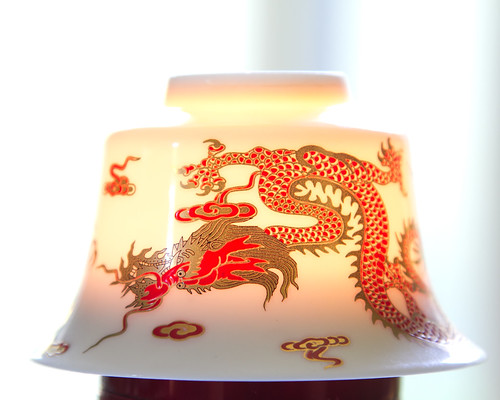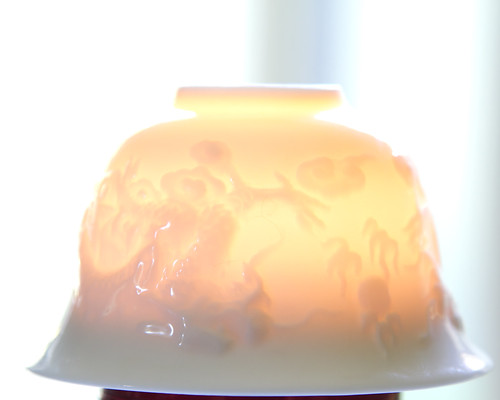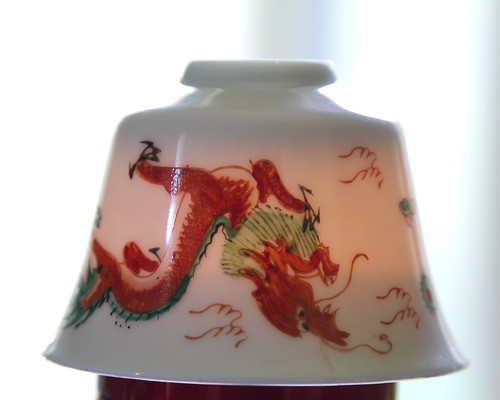There’s a particular floral aroma that I associate with mixed bouquets sold by street vendors with those little flower carts. It’s a mixture of exotic lilies and local wildflowers. Some of the loveliest green oolongs I’ve tasted have had this characteristic scent. It carries over into the taste, but is most noticeable on the freshly shock rinsed tea.
This tea: Anxi “Classic” Ti kwan yin, a Fall 2009 tightly rolled offering, releases this unique aroma upon opening the packaging. Poured out into a dish, the dry tea scents the air for several feet around. I’ve noted this on several occasions with very fine teas and am pleased to encounter it again.
Following a flash rinse, the aroma deepens to something reminiscent of iris or fragrant fuscia. I let the rinsed leaves sit for a minute or two, to begin opening, then start the first steep. On recommendation, I use a lower temperature water than I am accustomed for TKY and other oolongs. Generally I brew at just off-boil. Today, I’m using 180deg steeps.
The first steep, just 5 seconds, is very pale and very fragrant, with hints of honey and windfallen overripe apricots. After allowing the tea to rest again, the 2nd and third brews exhibit more of the characteristic yellow coloration, but still quite pale. After allowing the tea to rest again, the leaves have unfurled more than anticipated. I set aside half of the leaves for later, and once again learn the volumetric lesson that tightly rolled oolong can and will push the lid right off your gaiwan. Around the 5th or 6th steep, I notice just a tiny bit of astringency in the throat, but this disappears with subsequent steeps.
I’ll let the pictures speak:
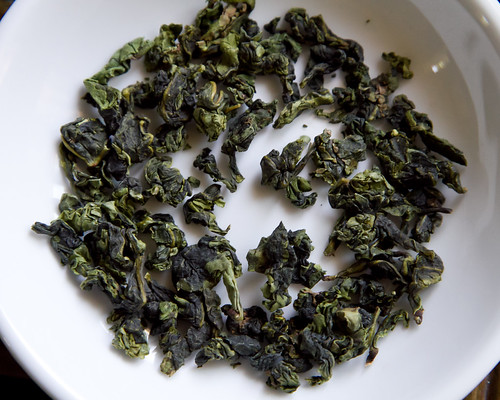
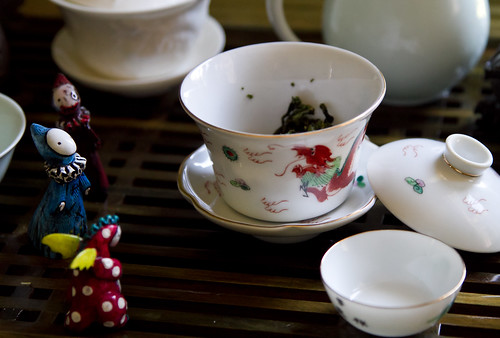
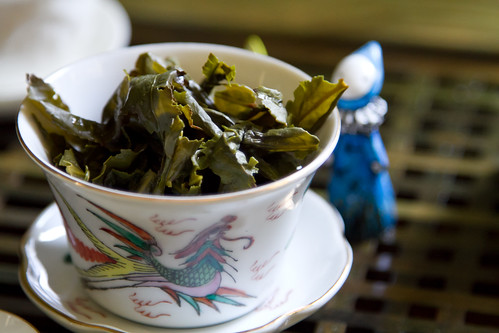
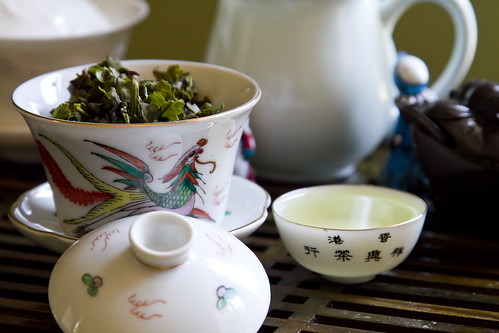
As of this afternoon, I’ve steeped around a dozen times, and this tea still is producing a flavorful brew. I suspect I’ll quit before it will, and note that it has foiled my plans to sample more than one type of tea today. I’m not complaining.
The gaiwan and tasting cup are also from The Mandarin’s Tearoom, the gaiwan is a very nice and moderately thin* bone china, handpainted with a dragon and phoenix motif. The tiny cups have writing on them, and a painted mountain, weeping tree and little boat. The cups are so thin they light up the tea. Though it is relatively easy to find decent gaiwan (china and porcelain being so common,) at inexpensive (even cheap!) prices, this set at $52 seems like a reasonable addition to my little collection, even if it is quite a bit more expensive than others I've purchased. It's clearly of good quality, balanced and well-designed.
* transparency comparison of 3 gaiwan, same capacity. These gaiwan all feel of a similar thinness, and the weight bears this out at 74g, 72g, 69g. I believe the weight difference comes in due to foot thickness, with the all-white lightweight also having a very small and thin foot. The two "porcelain" gaiwan display much more transparency, though they seem to be of similar dimensions and heft.
Interestingly, it is difficult to find any definitive information regarding the differences between “bone china” and porcelain. It seems that true bone china used bone ash to strengthen the clay, whereas porcelain traditionally did not. This resulted in “china” being more of a pure white than porcelain. However, modern porcelain methods use calcium carbonate, the important strengthening ingredient, thus most modern porcelain is actually “bone” china. Modern porcelain is usually snow white - making it virtually indistinguishable from modern “bone china.” In wares older than 60 or 70 years, the difference is far more obvious.
